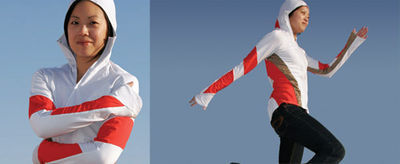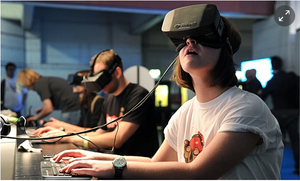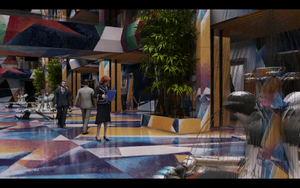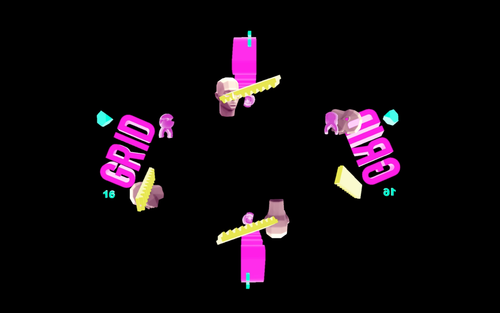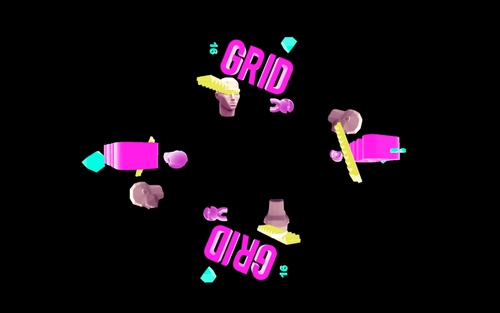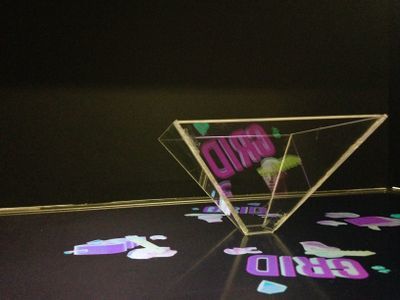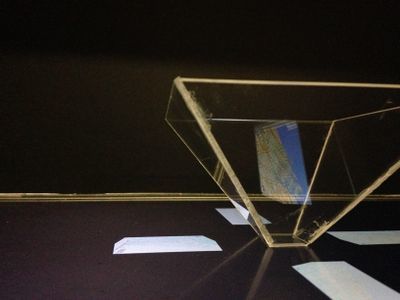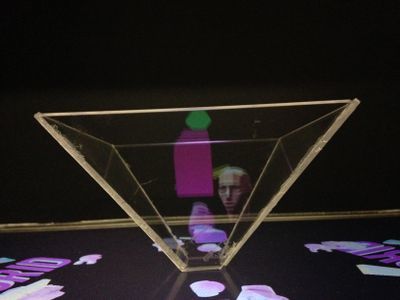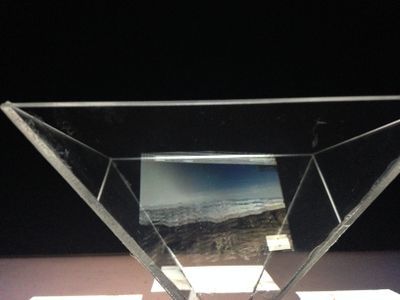Difference between revisions of "Unraveling the infra-ordinary (of the 21st century)"
| Line 84: | Line 84: | ||
<br /> | <br /> | ||
===Conception/Planning : '''Virtual Realities (“Magazine”)'''=== | ===Conception/Planning : '''Virtual Realities (“Magazine”)'''=== | ||
| − | in collaboration with Judith van der Heiden | + | in collaboration with Judith van der Heiden [[http://opensource.wdka.nl/wiki/User:JudithvanderHeiden]] |
<br /> Our starting point was the observation, that we (a lot of people living in the 21th century) spent a lot of time on our digital devices. They are used in different parts of everyday life, like working, communicating and entertainment and present an access to digital reality. We understand digital reality as a form of virtual reality, although the term is mainly used in a video gaming context. | <br /> Our starting point was the observation, that we (a lot of people living in the 21th century) spent a lot of time on our digital devices. They are used in different parts of everyday life, like working, communicating and entertainment and present an access to digital reality. We understand digital reality as a form of virtual reality, although the term is mainly used in a video gaming context. | ||
| Line 127: | Line 127: | ||
In your head you can create whatever you want. You can be whoever, whatever, where ever you want to be. | In your head you can create whatever you want. You can be whoever, whatever, where ever you want to be. | ||
<br /> This is what virtual reality holds out to us - the possibility of walking into the constructs of the imagination. [http://www.thenanoage.com/virtual-reality.htm] | <br /> This is what virtual reality holds out to us - the possibility of walking into the constructs of the imagination. [http://www.thenanoage.com/virtual-reality.htm] | ||
| − | |||
| − | |||
===Hologram/Medium=== | ===Hologram/Medium=== | ||
Revision as of 12:47, 8 November 2015
Contents
Field Research
people walking around while looking on their phones, calling someone, texting..*headphones to listen to music or talk to someone (still feels unfamiliar and strange if someone talks while wearing headphones)*man stands in the middle of the street, his arms raised up in the air, taking photos with an iPad, after a while he turns around 180° and takes a Selfie in front of the scenery he shoot earlier*20.9. from 15.20 walking around in the North of Rotterdam (noordmolenstraat) a lot of people walking around, sitting in cafes, shopping, some of them talking on their phones or looking on it while walking (head lowered). cafe from 16.11. two people sitting at a table (men and women)drinking a glass of wine, their smartphones lying on the table in front of them, man looks at the phone, they continue talking, the women leaves the table and the man takes his phone and holds it in front of his face, looks like his is taking photos, since he is sitting at the table next to me, he could be taking photos of me (feels unpleasant)* 8 women having wine together, every once in a while one of them lowers her head and does something on her smartphone, the conversations aren't interrupted*the waiter has a digital device to take orders, which looks like a phone, he looks like he is texting while taking an order*group of 5 men and 3 women, smartphones on the table and often on other objects like wallets or for example sunglasses on the phone
17.9.things I did today on my digital devices
8.30 woke up, answered on Facebook messenger, that we would Skype around 9.30
8.30 - 9.30; requested two new friends on Facebook, alarm clock at 09.00 (phone)
9.30 skyped until 10.30 (computer), images sent via Skype (phone - Skype version on the computer can't open photos)
since 10.30 listen to a remix, that was sent to me via iMessage (phone), short Facebook chat, checked my mails (computer), internet research, writing text (computer)
12.00 -12.36 watched an episode
13.29: answer to a previously read Facebook message, about rescheduling the evening appointment to Skype, (read-phone, answered-computer)
14.30 tried to connect with the wifi at city hall, password needed, unable to log in (phone)
15.15 called colleagues make plans
16.45 connected to eduroam/wdka, internet research, work (computer)
18.30 called someone in austria (phone)
19.00 connected to the internet at home (computer+phone)
until 22.00 checked emails, Facebook, research, watched a movie (computer)
(18.9.)
09.00 alarm clock (phone)
10.00-11.30 research, listen to radio, Facebook conversation about the plans on weekend (computer)
12.00 facebook message
12.30-14.00 work/research (computer)…
(Laptop/Smartphone is an important tool in everyday life. in terms of work, entertainment, communication and private relations. To communicate, gain knowledge, information, listen to music, watch films, watch series//Apps I use: Facebook, Facebook Messenger, Skype, Google Maps, Radio(Ö1), Youtube, for public transport(in Vienna/Austria)
The internet is taken for granted, Safari Browser, Camera, Messenger, Phone)
Research/Themes/Prototype
- Communication/Skype
Our digital devices are often used to communicate, with a specific person, a group of people or a more or less anonym audience. The feeling that everyone is reachable any time is created. (You are never alone any more, because there are so many ways of commincation) This is creating new globalized relationships. An increasing mobility of humans throughout the globe make the digital devices crutial.
Skype is creating a feeling of closeness, although you can touch the person so are taking to or even look them in the eyes properly. In a way you fell futher apart from the people you skype with and at the same time it is nice to be able to see them. Disruptions in-between conversations cause problems, repetitions, video or audio transfer is delayed or stops, --> Skype Room, Skype Suit --> Hug Shirt (- wearable technology) - the world's first haptic telecommunication wearable, How could Sykpe trigger other senses like touch. With the Hug Shirt you can sent hugs to the person wearing it.
The Hug Shirt is not meant to replace human contact, but to make you happy if you are away for business or other reasons and you miss your friends and loved ones. It also has some very interesting applications in the medical field with the elderly and children. And it is fun to use and very soft. How could human interaction develop if devices and tools like the Hug Shirt would improve, so it's able to commincate touch more realistically?
- Virtual Reality
The computer-generated simulation of a three-dimensional image or environment that can be interacted with in a seemingly real or physical way by a person using special electronic equipment, such as a helmet with a screen inside or gloves fitted with sensors. (Oxford Dictionaryies)
How much time do we spent in different virtual realities?
How will virtual reality develop and improve (imitating reality) in the future?
Under which circumstances would we stay in a virtual reality?
How would we describe the digital culture to aliens?
(oculus rift, motion suit, smart gloves//digital devices as extension of the human body f.e. Biohacking (DIY Body Modification) [1]
During the research I got really interested in the work by Jon Rafman, who is a Canadian artist, filmmaker and essayist.
In his work and films he is exploring the impact of technology on contemporary consciousness, frequently using images he finds on the internet.
He is well-known his project called 9-eyes, where he is collecting and exhibiting images from google maps.
The images often show violent content and raise the question if he actually found them on google maps. The thought that google maps is releasing images like this create a feeling of unease. 9-eyes: [2] He is also working with short movie, the two most intesting for me where videos like Mainsqueeze, Still Life (Betamale) and Popova-Lissitzky Office Complex. Videos on vimeo: [3]
Conception/Planning : Virtual Realities (“Magazine”)
in collaboration with Judith van der Heiden [[4]]
Our starting point was the observation, that we (a lot of people living in the 21th century) spent a lot of time on our digital devices. They are used in different parts of everyday life, like working, communicating and entertainment and present an access to digital reality. We understand digital reality as a form of virtual reality, although the term is mainly used in a video gaming context.
From our point of view, the virtual reality could be understood as a parallel reality one could enter through different social media platforms, interactive games or google maps.
We became interested in the different digital devices like the oculus rift or motion tracking suits, which function as an access to the virtual world. It's interesting how those devices are being used and which affects they have on the human body or trigger all five senses, for instants the oculus rift often makes a lot of people lose their balance. Another important aspect was, the question of how much time in virtual reality is healthy and at which point it's turning into an addiction. In terms of gaming addictions is often said by affected persons, that the seams between reality and virtual reality are starting to break down, if you spent a lot of time in virtual reality. The virtual world can be so seductive and realistic, that it becomes more interesting than the real world.
Our speculative approach to the theme, made us think about a future, in which the virtual world became so real, that it could be mistaken for the real world/outside world. In that scenario the virtual world would be accessible to a broader public.
Under which circumstances would people stay in virtual reality forever?
How must the interactive digital devices develop to make people wanting to stay in virtual reality?
How would such a world look like?
How would human interaction change? Could a new more direct form of communication develop?
We would like to speculate about this future world and design a magazine (placeholder) that would be published in and about this future. In the context of this magazine our current time, would be called post reality and people spent most of their time in different virtual realities. The content of the magazine would be based on our research and fictional ideas about the future.
An important point about the project was the question of media and form of presentation. Since a printed magazine is a very contemporary medium, we thought about using new digital technology to maybe create an interactive magazine, one could walk though. Maybe using different gestures of our everyday life, like swiping, zooming etc. We decided on using holograms to depict our ideas.
Having more than one of these holograms placed in a dark room, could create the feeling of walking though the magazine/a virtual world.
As a starting point we made two videos, one showing the logo of the magazine and another one working Google Maps and computer generated voices.
In this context Google Maps function as an example for an easy accessible virtual reality, which makes it possible to go to a lot of places virtually. The world is virtually mapped and shown in a specific way, which is now common knowledge. Using this well known aesthetics on one hand shows a contemporary approach to virtual reality and shows on the other hand possibilities of how the technology could develop.
To watch the videos: [5]
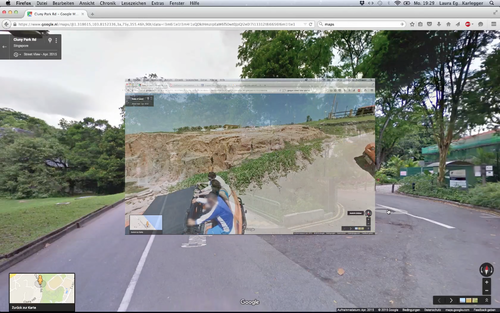
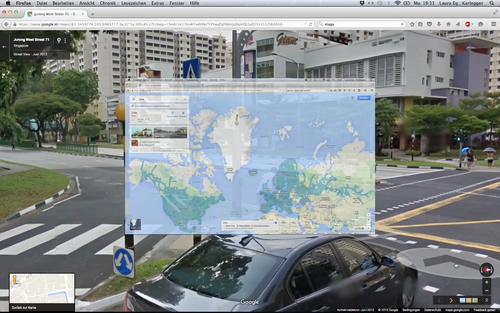
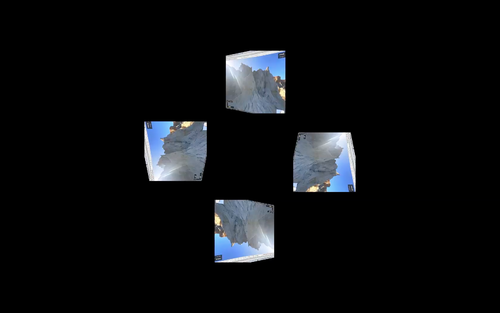
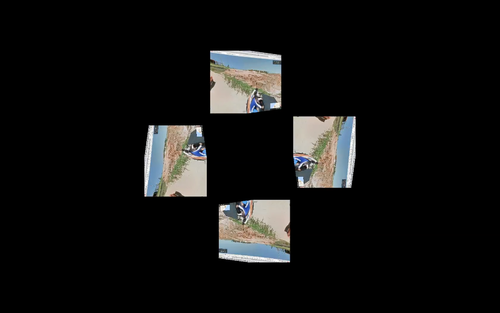
Everything we experience can be reduced to electrical activity stimulating our brains as our sensory organs deliver information about the external world.
This interpretation is what we consider to be "reality."
The brain is reality.
Everything you see, hear, feel, taste and smell is an interpretation of what's outside, and created entirely inside your head.
In your head you can create whatever you want. You can be whoever, whatever, where ever you want to be.
This is what virtual reality holds out to us - the possibility of walking into the constructs of the imagination. [6]
Hologram/Medium
First Test:
